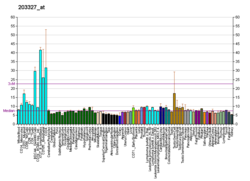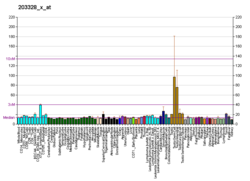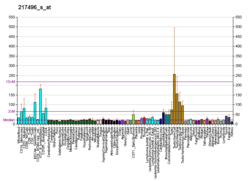Alzheimer's disease
Considerable interest in IDE has been stimulated due to the discovery that IDE can degrade amyloid beta (Aβ), a peptide implicated in the pathogenesis of Alzheimer's disease. [14] The underlying cause or causes of the disease are unclear, though the primary neuropathology observed is the formation of amyloid plaques and neurofibrillary tangles. One hypothesized mechanism of disease, called the amyloid hypothesis, suggests that the causative agent is the hydrophobic peptide Aβ, which forms quaternary structures that, by an unclear mechanism, cause neuronal death. Aβ is a byproduct generated as the result of proteolytic processing of the amyloid precursor protein (APP) by proteases referred to as the β and γ secretases. The physiological role of this processing is unclear, though it may play a role in nervous system development. [15]
Numerous in vitro and in vivo studies have shown correlations between IDE, Aβ degradation, and Alzheimer's disease. Mice engineered to lack both alleles of the IDE gene exhibit a 50% decrease in Aβ degradation, resulting in cerebral accumulation of Aβ. [16] Studies of genetically inherited forms of Alzheimer's show reduction in both IDE expression [17] and catalytic activity [18] among affected individuals. Despite the evident role of IDE in disease, relatively little is known about its physiological functions. These may be diverse, as IDE has been localized to several locations, including the cytosol, peroxisomes, endosomes, proteasome complexes, [19] and the surface of cerebrovascular endothelial cells. [20] Based upon the aforementioned observation in protein structure, it has been proposed that a possible therapeutic approach to Alzheimer's might involve shifting the conformational preference of IDE to the open state, and thus increasing Aβ degradation, preventing aggregation, and, ideally, preventing the neuronal loss that leads to disease symptoms.









